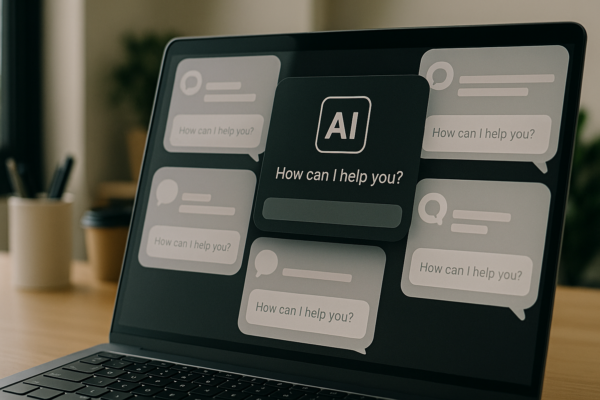AI is making its way into HR—whether your team is ready or not. For many people leaders, the appeal is clear: less repetitive work, faster response times, and more bandwidth to focus on culture, strategy, and retention. But turning that vision into reality takes prep.
That prep often gets blocked right at the start: “Where do we even begin?”
In many cases, the biggest hurdle isn’t buying the tech—it’s organizing your content. We’ve seen pilot programs stall for weeks because an IT team requested a complete document inventory or a policy was stored in four slightly different versions.
This guide helps you avoid that fate. It breaks down how to get your HR docs and workflows AI-ready without getting buried in complexity. It’s designed for lean HR teams who want to move fast, deliver value, and build trust across the org—from IT to leadership.
Let’s get into it.
Step 1: Know What HR Documents AI Actually Needs
Start with the basics: Winslow (or any AI assistant) doesn’t need access to your company’s entire digital archive. It needs the right information, not every document.
Focus on:
- Your current, active HR policies (e.g., PTO, parental leave, remote work)
- Your company-specific language and exceptions (e.g., region-specific perks, union nuances)
- The tools where this content lives (e.g., Notion, GDrive, SharePoint)
Your goal is to assemble a clear, representative snapshot of what your team actually uses day-to-day.
Step 2: Pick the Use Cases You Want to Support
Before indexing content, decide what your AI assistant will actually do. Here are great first use cases:
- Answering employee questions: “Where can I find the handbook?” “Do I qualify for sick leave in Colorado?”
- Generating HR documents: Offer letters, onboarding checklists, warning notices, and promotion letters
- Supporting HR SOPs: Reminders to managers, nudges for new hires, compliance tracking
Keep it narrow at first. You’re not automating HR. You’re giving your team a sidekick.
Step 3: Map Out What Documentation Lives Where
One of the biggest blockers we’ve seen in pilot programs is a total lack of content organization. So map it out.
Create a living doc that says:
- “Our vacation policy lives in Notion”
- “Manager-only checklists are in GDrive”
- “Org charts are in BambooHR”
This helps both Winslow and your IT team quickly understand the layout—and helps you clean house in the next step.
Want a deeper look at how AI helps manage messy HR files across platforms like Notion and GDrive? Check out our guide to AI document management benefits.
Step 4: Clean Up Redundancies
Redundant or outdated documents are one of the biggest blockers to effective AI use. In our AI document management blog, we explain how the right system can reduce version control headaches and keep content current.
AI doesn’t hallucinate, but it will reflect your mess if you give it five conflicting policies.
Start by:
- Deleting or archiving outdated documents
- Flagging “draft” vs. “final” versions
- Adding a “last reviewed” tag to key policies
Your goal is to ensure the AI only references content you’d feel confident repeating yourself.
Step 5: Decide What’s “Public” vs. “Private”
Winslow can handle visibility logic—but it helps to make it easy upfront.
Ask yourself:
- Should all employees see this?
- Is this for HR/manager eyes only?
- Is this still in draft form?
Marking each doc (or folder) with a visibility level makes onboarding smooth and avoids information sprawl.
Step 6: Add Context to FAQs
Most HR teams answer the same few questions a lot. Instead of viewing that as noise, treat it as signal.
Take your most frequent questions and:
- Document the answer with examples
- Link directly to relevant policy text
- Note edge cases you usually explain over Slack
This “policy plus context” approach makes Winslow’s answers way more helpful—and helps reduce follow-up pings.
Step 7: Standardize Naming Your Documents Where You Can
AI tools rely on structure. If your PTO doc is called “Vacation_V2_FINAL_updated2022.pdf”—good luck.
Rename your files and titles consistently:
- “Remote Work Policy”
- “2024 Compensation Philosophy”
- “Performance Review Process”
One clear name per thing. No more, no less.
Step 8: Pick One System of Record for HR Documentation
If you have policies in Notion, GDrive, Dropbox, your desktop, and Slack, your assistant is going to get confused—and so is your IT team.
Pick one platform to serve as your primary source of truth for each document type. Communicate this clearly with:
- A shared folder for Winslow to index
- A backup plan for migrating legacy docs
This one decision can accelerate your rollout by weeks.
Step 9: Loop in IT Early (With the Right Framing)
Here’s how not to start: “We’re rolling out AI for HR!”
Instead, try:
“We’re testing an AI assistant that helps us answer policy questions faster using content from Notion and BambooHR. It’s read-only, doesn’t train on our data, and has encryption by default.”
When you come with:
- Clear use cases
- Defined data sources
- Security protocols (like Winslow’s SOC 2 roadmap)
…it turns the AI conversation from a red flag to a green light.
Step 10: Start With One Workflow, Then Expand
Winslow can do a lot. But the fastest way to prove value is to focus on one high-friction area.
We recommend starting with:
- Answering repeat employee questions
- Supporting onboarding workflows
- Auto-drafting performance documentation
Use this as your sandbox to test, learn, and build credibility. Expansion gets easier once people see the time saved.
TL;DR: AI for HR Documents
When implementing AI in HR, your AI HR assistant doesn’t need every dusty doc in your archive. It needs:
- Clear, current content
- Smart access rules
- A single place to look
Start focused. Move fast. Communicate clearly. And loop in IT early. Do that, and Winslow becomes the assistant you wish you had two years ago.
Ready to prep your docs? Winslow can help every step of the way. Let’s chat.



